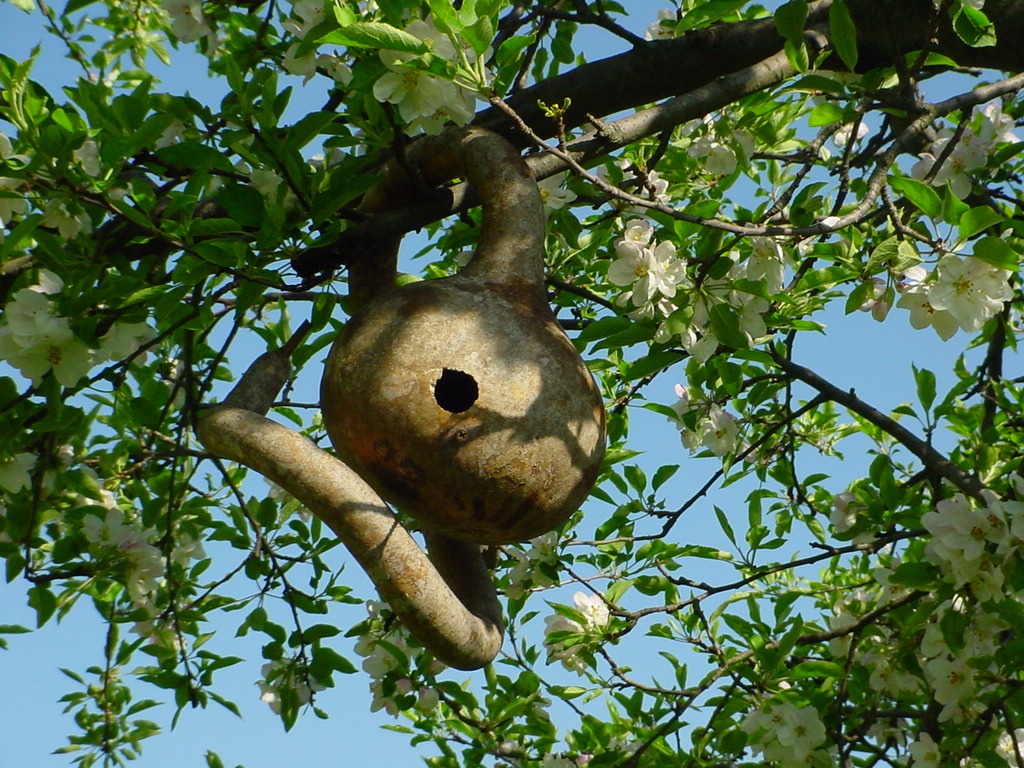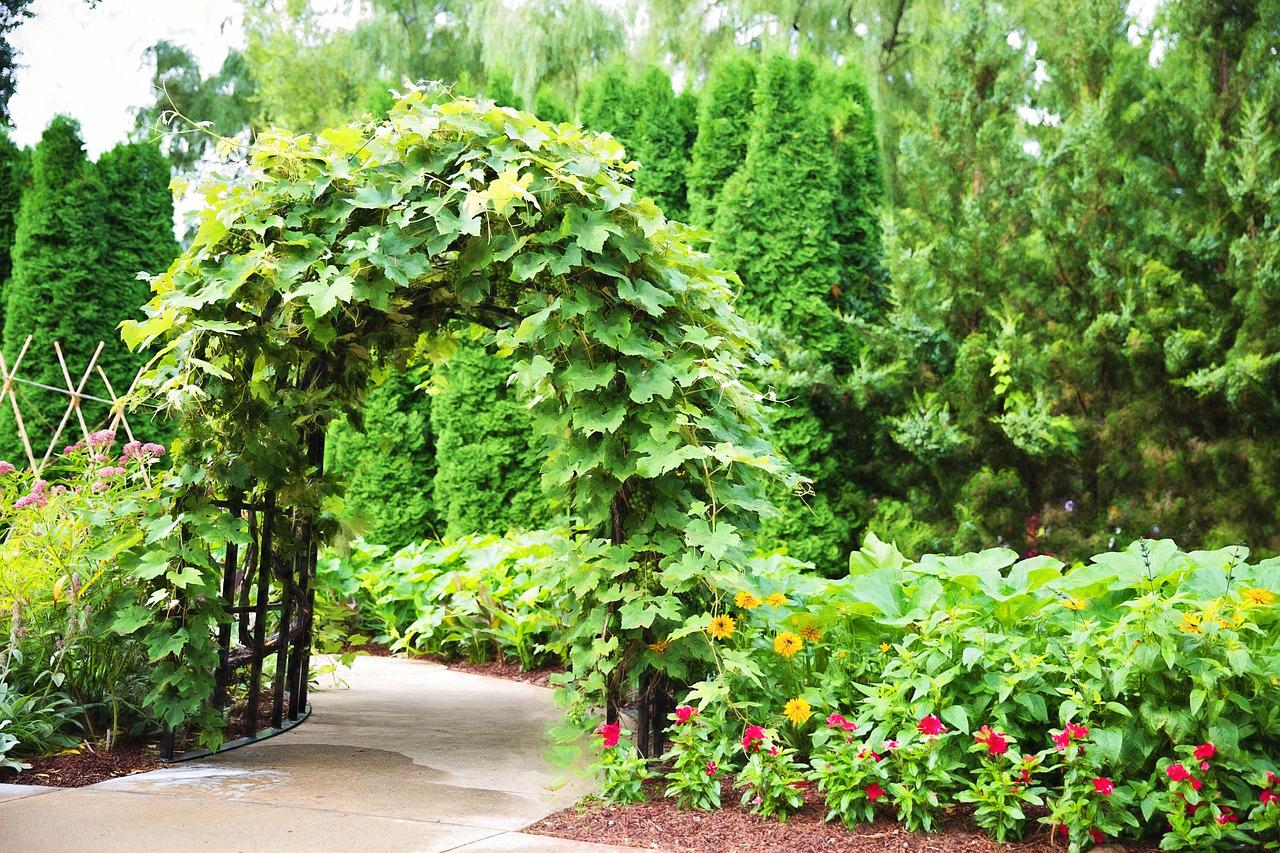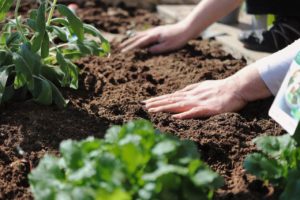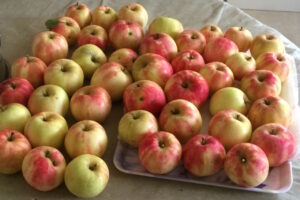On April 12, I sowed some birdhouse gourd (Lagenaria siceraria) seeds indoors, hoping they would yield a few gourds that could be used as birdhouses next year. Two weeks later, they started emerging and on June 11, after a cold spring, the ground around a tall, black metal arbour was finally warm enough to receive the seedlings, two on each end. I provided a generous helping of homemade compost to each seedling — as I usually do for other members of the squash family — and watered regularly.

Before long, the vines were climbing the arbour, and in a few weeks, they reached the top and began to form a dense mass of large green leaves covering most of it. By early August, flowers were blooming. Gourd flowers are usually white and open in late afternoon or evening and bloom during the night. I wondered if they were being pollinated. There were several tiny gourd-shaped fruits hanging from the vines, but these soon turned brown and dropped off – just as unpollinated flowers do for zucchini and other squashes. Maybe I wouldn’t have any gourds to use as birdhouses, but the luxuriant vines made a statement in the garden and the pure white flowers were beautiful in the evening. Gardeners learn to be thankful for unexpected gifts instead of dwelling on disappointment over unrealized plans.
On the morning of September 2, as I was filling up containers from our large water tank, a Hydro employee with a monitor in his hand appeared and walked confidently into the yard. I realized he was reading gas meters and greeted him: “Good Morning. Nice to have a cooler, breezy day today with few mosquitoes — must be better for your work” to which he replied, “Yes, it sure is!” I walked to the garden and was shocked to see the vine-covered arbour lying flat on the ground, across the path that is our normal route through the vegetable area. “Wow! What happened? It must be the wind!” I said and the fellow came forward and asked if I needed help lifting it back up. “Yes, that would be great.” He quickly assessed the situation and positioned himself at the top end of the arch and lifted, while I tried to help from one side, finding my feet tangled in the vines that were still tenaciously gripping the metal structure. As another gust of wind shook the raised arch, he asked me whether I would like it to be set down again. “No, I will prop it up with some tall stakes. You are a gem! Thank you so much!” He went to finish reading the meter and was on his way. I spent the next hour hammering wooden stakes along the arch to secure it and writing a letter to Hydro Customer Service telling them about their wonderful employee.
I realized the following:
Physics matters in a garden too. A top-heavy object is vulnerable to tipping when there is a breeze.
Birdhouse gourds are interesting plants but need a very strong structure that is well-secured to the ground.
Life can be beautiful, even in the midst of trouble, when one experiences the kindness of a stranger.
Birdhouse Gourd Photo ©VasenkaPhotography, 2006, obtained via Flickr. Some rights reserved.
License details: Attribution 2.0 Generic (CC BY 2.0)
Wendy spent a good part of her adult life moving with her husband, never staying long enough to see an apple tree mature and bear fruit. When they retired, developing a food garden and planting hardy ornamentals became a passion. Weaving her previous studies in nutrition with her current interest in gardening has become a stimulating and life-giving activity.





I so enjoyed your tale of the overwhelmed arboour, and the kind hydro employee. I took heart in your line that “Gardeners learn to be thankful for unexpected gifts instead of dwelling on disappointment over unrealized plans.” And I was struck that you made time to affirm the meter-reader to his employer. Blossomings of kindness all through the garden!!
I am inspired, Wendy, by your story of welcoming an “unexpected gift” of kindness and passing it on by way of affirmation. Thank you.
I am just reading your wonderful article now, Wendy; I love the idea of a gourd as a birdhouse; what ingenuity!